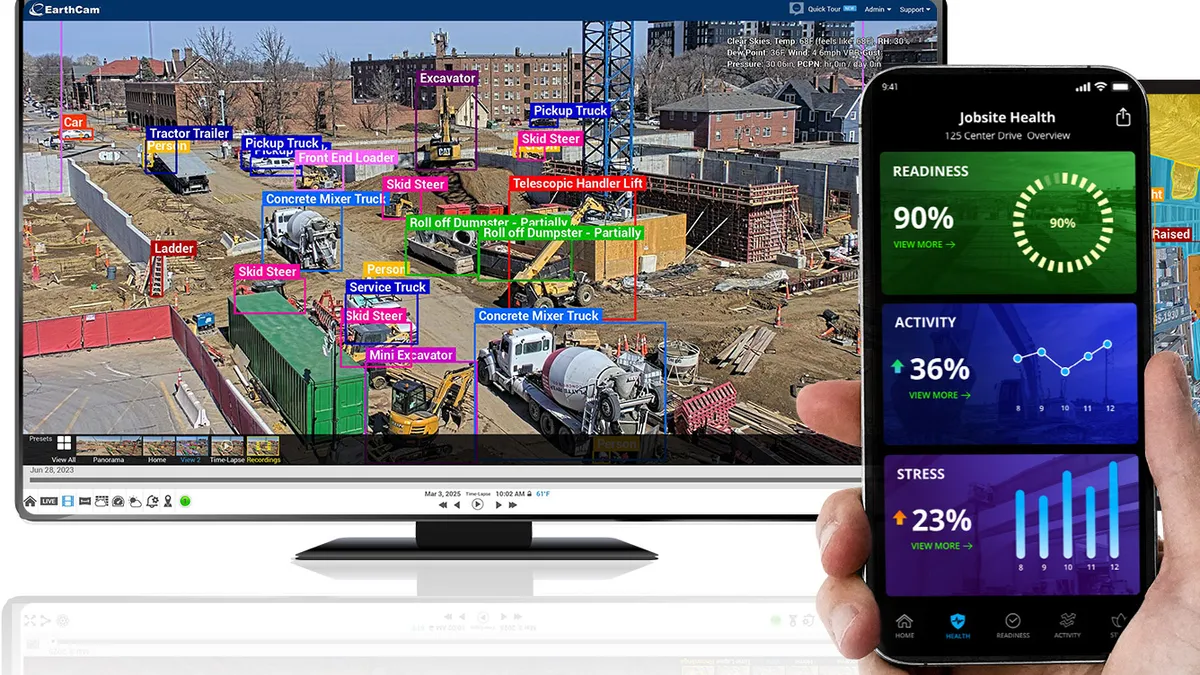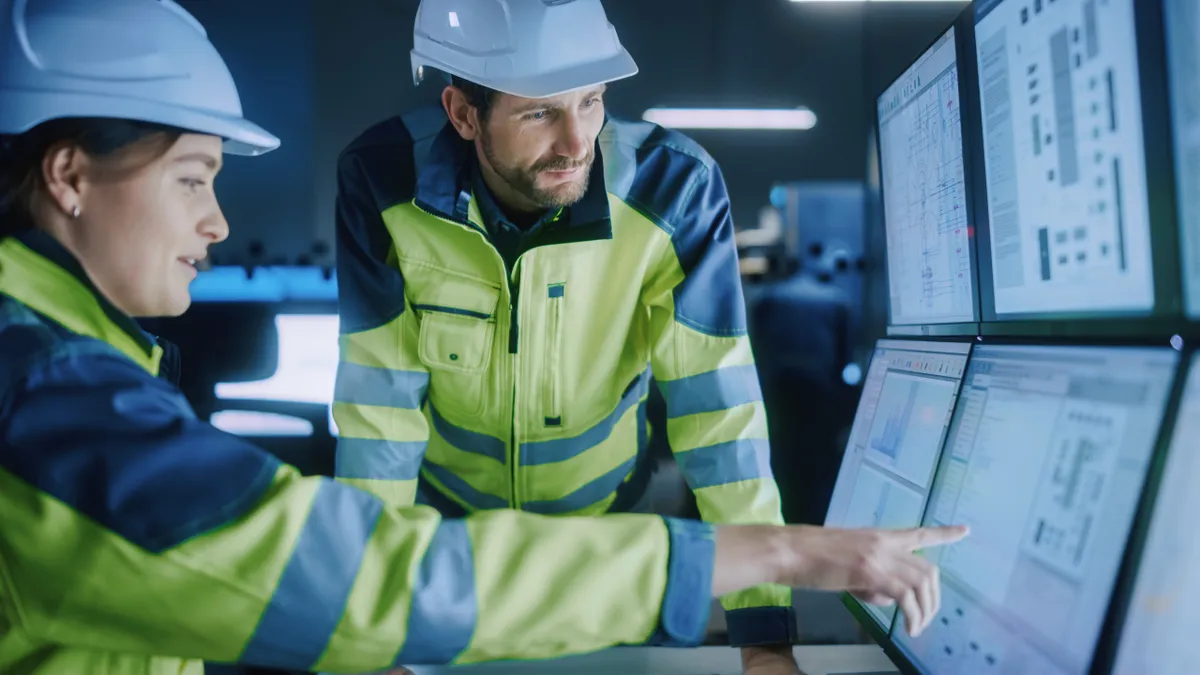Sources in the modular world were hard to reach this month. “I just got off the phone with Chris Christie,” said one on background. Others mentioned their lines had been ringing off the hook with entities ranging from indigenous community heads to the Army Corps of Engineers to foreign officials spanning from Panama to Central Asia.
Stemming the COVID-19 outbreak’s death count — estimated at just under 10,000 in the U.S. at the time of publication — calls for many more of a lot of things. More ventilators, more testing kits, more triage and more frontline healthcare professionals. But as New York City has shown, capacity surges quickly in this crisis and all of the medical equipment and doctors in the world are nothing without more space.
“It’s a war,” Canadian modular builder Horizon North’s President and CEO Rod Graham told Construction Dive. The modular building industry, he said, has “a role in ending it.”
That’s because space is what the construction industry provides, said Chris Giattina, CEO at modular firm Blox. In this case, it’s “critical space” and it “needs to be delivered three weeks ago.”
Beds were full before the coronavirus, Giattina continued, so hospitals now need alternative spaces to serve existing patients. For COVID-19, doctors need intensive care units, isolation units and “high-tech boxes that negatively pressurize mist so that infections move from high pressure to low pressure to exhaust through a HEPA filtration that scrubs it all so people don’t get sicker working in it.”
The global healthcare macrocosm also simply needs a “pressure release valve” in times like these so that it can keep operating, he said. Disaster preparedness tents are disposable, desperate solutions, he said.
Instead, meeting the space requirements of a pandemic fallout should involve a forward-thinking means of providing the most effective space possible not only for tomorrow, but for when it’s needed next week and next month as the crisis evolves and when the next pandemic emerges, "in a way that’s accretive to the overall system."
That’s where modular could come to the rescue.
"If the government says we need 5,000 beds a week, no one manufacturer can do it. But for one design alone, for example, we've got 20 manufacturers that have all said they'll build it."

Tom Hardiman
Executive Director, Modular Building Institute
Some officials are urging hotels and convention centers to retrofit and repurpose rooms and halls to help act as that immediate pressure release valve, but there are actually two more waves to ride, Modular Building Institute Executive Director Tom Hardiman said.
Once the system catches up, it’s also going to need to meet a spike of short-term demand for medical facilities following the virus to locations yet to be determined and society is going to need a promise that they can be delivered and deployed much more rapidly in the future.
Modular has a unique strength among building solutions to compact timelines, he continued. Speed to market is the most important factor in this climate, and the sooner the right types of spaces are delivered, the greater the chance that lives are spared.
“Modular is viewed as a very strong technology to respond to the coronavirus crisis,” Horizon North’s President of Modular Solutions, J.P. (Joe) Kiss, told Construction Dive. “Why? Because of it's very high speed of reaction."
Now: Putting shelters in place
“We’re ready,” is the modular niche’s overwhelming anthem, Hardiman said. “If you need something today, right now, there are companies that have units stocked anyway in their fleet, ready to deploy. They may be [modules for] office buildings that you can convert into testing and triage centers — but it’s better than a tent in a parking lot.”
For immediate emergency needs, “we have literally thousands of units that we’re looking to deploy in their existing form or with slight modifications to become isolation units, housing units or staffing units that would help support healthcare workers’ infrastructure,” Kiss continued.
“That’s happening in real time,” with very few limitations in shipping. That's a stance Giattina echoed, noting that DOTs allow shipments of up to 15-feet wide, 15-feet tall, up to 60-feet long boxes, providing options that include intermodal train, trucking and vessel operations, hence the calls from overseas.
"Almost every manufacturer I've talked to has pledged to put all of their production aside and dedicate their lines to healthcare," Grant Geiger, CEO of EIR Healthcare, a firm that specializes in modular healthcare builds, told Construction Dive. That comes in all forms, he said. For example, “that could mean a modified shipping container that houses a small power plant" to support supplementary medical units that have been placed in overflow fields.
But MBI is urging its members not to “overpromise,” Hardiman said. With rapid response, the challenge now is transparency, Hardiman said. “If you have a portable classroom, don’t call it a medical facility. It may be built to [International Building Code], but will need to be upgraded to serve medical purposes.”
Next: Flattening the curve of bed demand
Medical units are in the most dire need, however, and they take longer to fulfill.
“We have calls demanding, say, 65 portable ICU modules today,” Hardiman went on. “Nobody has built 65 of these facilities sitting around in anticipation of something like this — not even FEMA. It’s easy to find 65 housing or classroom units that you convert, though.”
But now, the industry has mobilized and pivoted to provide medical modules quickly, he said.
“We’re talking about weeks,” Geiger said in reference to delivering bespoke turnkey healthcare modules, dubbed MedModular, that EIR has schematically designed for manufacturers — such as its partners FullStack, Deluxe Modular and Admares, for example — to build on their 10,000- to 15,000-square-feet-per-week-capacity factory lines. “We’re looking at as short as four weeks” for the first rooms to start showing up on site after a purchase order is placed.
“Issues that do come up are going to be around the medical equipment supply chain,” he said. “The industry generally relies on third-party manufacturers to make things like headwalls, and there aren’t thousands of prefabricated headwalls sitting around somewhere. But we also engineer and fabricate headwalls ourselves.”
The high-tech boxes that Blox’s Giattina spoke about, dubbed the MICU, or mobile isolation care unit, are also seeing their production timelines shaved from months to weeks, he said. “The way we’re doing that is technological. It’s a digital conversion from BIM data, layered with metadata that informs the supply chain and procurement process, delivered over the Autodesk Construction Cloud, that’s converted to G-codes that talks to a CNC machine, for example, and gets production moving."
“We have products that are pre-designed that can be rapidly brought into the manufacturing phase, even if they need to be slightly reconfigured, to deliver up to 50,000-square-feet, multistory units that can be built in three to four months from the time we get a contract to the time the building is open,” Kiss said. “We have the ability to ramp up shifts as well,” he said.
A ramp-up time of one to two weeks will likely be in order for most plants, Hardiman said. “Remember that a lot of these factories are closed right now due to governors’ shutdowns. So you probably have a two-week lead time if the contract hit today.”
With room to expand from a starting production capacity of approximately 50,000 square feet, or about 2,000 beds, per week, the modular industry has very little in its way, Hardiman said, and the group is trying to make the process of delivering modules as painless as possible by providing access to floorplans of steel and wood containerized solutions, medical modules and full-building primary care clinics and hospitals designed to code.
"If the government says we need 5,000 beds a week, no one manufacturer can do it," Hardiman added. "But for one type of supplemental care unit design alone, for example, we've got 20 manufacturers that have all said they'll build it."
There are, of course, frailties in the supply chain, EIR’s Geiger said, when it comes to fittings and mechanicals necessary for healthcare implications, that are mostly beyond the scope of the industry. Horizon and other manufacturers anticipate supply chain disruptions in a few months, but note they’ve developed contingency plans to account for most bottlenecks and have built-in some optionality into their designs, Kiss said.
Later: Rethinking modular for the next pandemic
Giattina was careful to say that modular is not a solution. “It’s a tool,” he said, that “if wielded properly, can yield certain results. If you have a hammer, everything looks like a nail.”
There is no one tool to solve a complex problem like the coronavirus and as such, there are times when modular, as a singular tool, makes no sense, he said.
But when it comes to pandemic we’re in the midst of — and future pandemics — it makes sense, he concluded.
That's especially the case when all eyes are on China's rapid deployment of two mostly prefabricated hopsitals in Wuhan within 10 days just weeks after the outbreak started to really spread. "That's because their government had the foresight to do the legwork on getting that deployed in an emergency long ago," Kiss said, adding that's where the Western world is headed next.
Next month, in Part 2 of this package, we'll look at the ways modular intends to address the next pandemic.
Stay tuned to this monthly column as it takes a deeper, nuanced and sometimes more critical look at the modular movement, and feel free to email me your thoughts, concerns and ideas on topics to cover in this series.
The Modular Monitor series is brought to you by The Modular Building Institute (MBI), the voice of commercial modular construction. MBI has no influence over Construction Dive's coverage within this column or other articles, and its content does not reflect the views or opinions of MBI or its employees other than as a journalistic source in some cases.
As The Voice of Commercial Modular Construction (TM), it is MBI's mission to expand the use of modular construction through governmental advocacy, industry outreach, and professional development. Join us today.





















